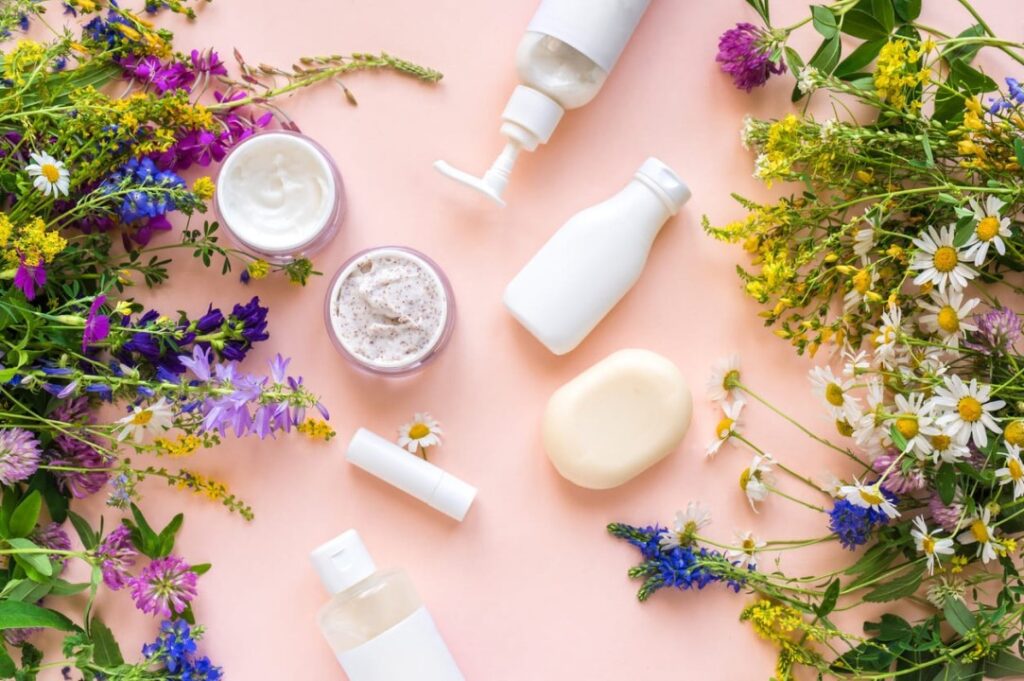Welcome to our ultimate guide on choosing the right cosmetics! In this article, we will provide you with valuable makeup tips and insights to help you navigate the vast world of beauty products and make informed decisions. Whether you’re a makeup pro or a beginner, we’ve got you covered!
Choosing the perfect foundation is a crucial step in creating a flawless makeup look. With so many options available, it can be overwhelming. But fear not, we are here to help you find the foundation that suits your needs and preferences.
Tips for Choosing the Correct Shade and Color of Foundation
When it comes to selecting the perfect foundation, finding the right shade and color is essential. Your choice should complement your skin tone and blend seamlessly for a natural, radiant finish. Here are some tips to help you navigate the world of foundation colors and ensure a flawless match:
Consider Your Undertones
Undertones are the subtle hues beneath the surface of the skin that determine how foundation shades appear on you. The three main undertones are warm, cool, and neutral. Warm undertones have golden or olive tones, while cool undertones have hints of blue or green. Neutral undertones have a mixture of warm and cool tones, making it easier to find a suitable shade.
Here’s a quick test to determine your undertone: examine the veins on your wrist. If they appear green, you likely have warm undertones. If they appear blue, you probably have cool undertones. If you can’t quite tell, or if your veins appear bluish-green, you likely have neutral undertones.
Test in Natural Daylight
The best way to find your perfect foundation match is by testing shades in natural daylight. Artificial lighting can distort colors, so make sure to step outside or near a window when swatching different shades. Apply small dots of foundation along your jawline and observe how well they blend into your skin. The shade that seamlessly disappears into your skin is the winner.
Don’t forget to take your time when testing shades and give them a few minutes to settle. This allows you to see how the foundation oxidizes on your skin and whether it matches your natural tone.
Consider Two Shades for Versatility
Depending on the season and your preferences, it can be helpful to have two foundation shades on hand. One shade that matches your skin tone perfectly ensures a seamless, natural look. The other shade can be slightly lighter, which you can use for brightening under the eyes or blending with the matching shade for a custom blend.
Understand Color Theory
Color theory plays a significant role in choosing the right foundation color. Complementary colors on the color wheel cancel each other out when combined. For example, if you have redness or blemishes, green-tinted foundations can help neutralize the redness. Similarly, peach or orange-toned color correctors can help counteract dark circles or hyperpigmentation.
Foundation Shade and Undertone Matching Guide
| Foundation Shade | Warm Undertones | Cool Undertones | Neutral Undertones |
|---|---|---|---|
| Light | Golden or peachy | Light beige or rosy | Beige or balanced mix |
| Medium | Warm caramel or honey | Neutral beige or pinkish | Warm beige or equal mix |
| Dark | Deep golden or bronze | Deep mocha or espresso | Rich brown or balanced mix |
Remember, this table serves as a general guide, and it’s essential to test shades on your own skin to find the perfect match. Always swatch and observe in natural lighting to ensure the most accurate results.
By considering your undertones, testing shades in natural daylight, and understanding color theory, you’ll be well-equipped to choose the correct shade and color of foundation that enhances your natural beauty and gives you a flawless, radiant complexion.
Understanding and Choosing the Right Type of Product
When it comes to selecting the perfect foundation, it’s crucial to consider not only the shade and color but also the finishes and consistencies available in the market. These factors play a significant role in determining the overall look and feel of your makeup. Let’s explore the different options to help you make an informed decision.
Foundation Finishes
The finish of a foundation refers to the level of shine or sheen it provides on the skin. There are three main types to choose from:
- Matte foundations: These foundations offer a shine-free finish, making them an excellent choice for individuals with oily skin. They help control excess oil throughout the day, providing a long-lasting, matte look.
- Natural finish foundations: These foundations give your skin a subtle glow without looking overly shiny. They work well for normal to dry skin types, providing a natural, healthy-looking complexion.
- Luminous finish foundations: These foundations create a dewy or radiant look, adding a subtle glow to dull or dry skin. They are perfect for achieving a luminous complexion and giving your skin a fresh, youthful appearance.
When choosing a foundation finish, consider your skin type and desired look to achieve the best results.
Foundation Consistencies
The consistency of a foundation plays a key role in its application, coverage, and overall feel on the skin. Here are some common foundation consistencies to consider:
Remember, not all brands categorize their foundation consistencies in the same way. Be sure to check their definitions to ensure you choose products that align with your preferences.
| Consistency | Description |
|---|---|
| Liquid foundations | These foundations come in a liquid form, making them easy to apply and blend. They generally offer a light to medium coverage and provide a natural-looking finish. |
| Cream foundations | Cream foundations have a thicker consistency than liquid foundations and offer medium to full coverage. They are suitable for individuals with dry or mature skin, as they provide extra hydration and a smooth, flawless finish. |
| Powder foundations | These foundations come in a powder form, making them ideal for oily skin types as they help absorb excess oil and provide a matte finish. They offer buildable coverage and can be used alone or as a setting powder over liquid or cream foundations. |
| Stick foundations | Stick foundations have a solid form and are convenient for on-the-go application. They offer medium to full coverage and can be easily blended into the skin for a seamless finish. Stick foundations are great for achieving a natural-looking base while providing ample coverage. |
Understanding the different foundation consistencies allows you to choose a product that aligns with your preferred application method and desired level of coverage.
By considering both the finishes and consistencies of foundations, you can select products that cater to your skin type, provide the desired level of coverage, and deliver the finish you desire. Remember, everyone’s preferences and needs are unique, so don’t be afraid to experiment and find the perfect foundation for you!
Image: A visual representation of a model wearing a foundation with a matte finish.
Conclusion
Choosing the right cosmetics is a crucial step in enhancing your natural beauty. When selecting foundation, it’s important to consider your skin type, undertones, desired coverage, and preferred finish. By taking these factors into account, you can achieve a flawless makeup look that suits your unique features.
Testing potential foundation shades on your jawline in natural daylight is essential to finding the perfect match. This ensures that the color blends seamlessly with your skin tone, giving you a natural and flawless appearance. Additionally, understanding color theory can help you choose a foundation color that complements your skin undertones.
Don’t forget to explore the different finishes and consistencies available in the market. Whether you prefer a matte, natural, or luminous finish, or a liquid, cream, powder, or stick consistency, there are cosmetic products to suit every preference and skin type. Taking the time to understand and choose the right cosmetics will help you achieve your desired makeup look with confidence.



